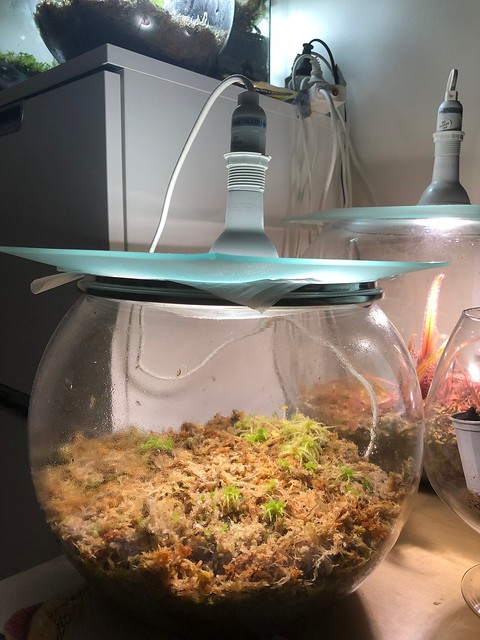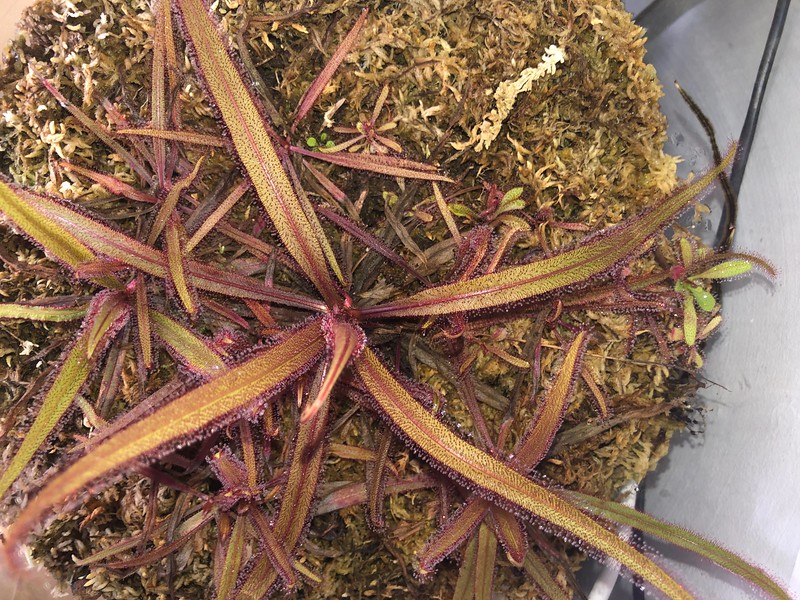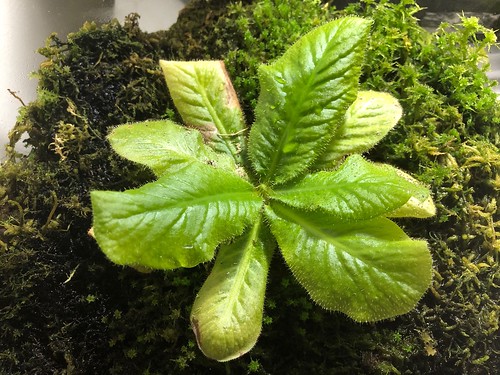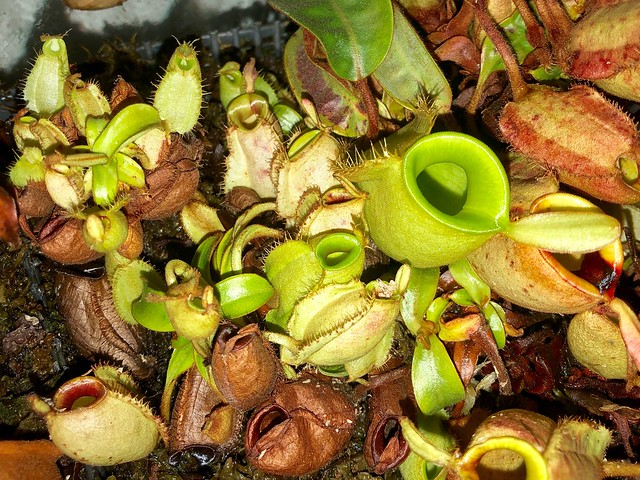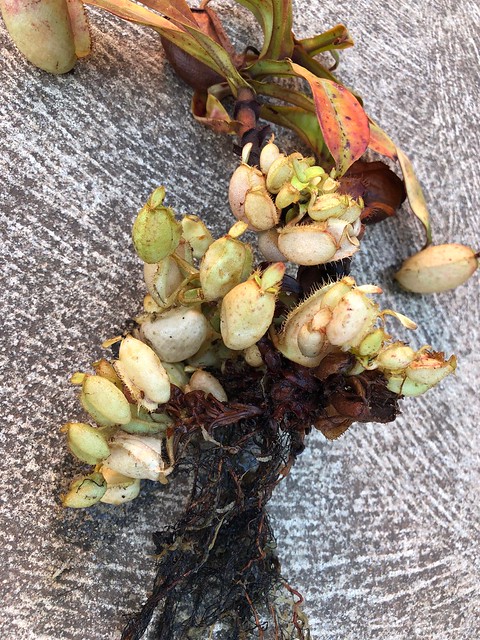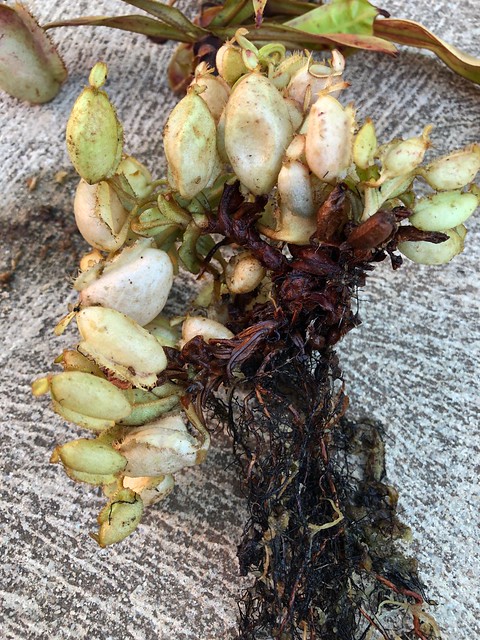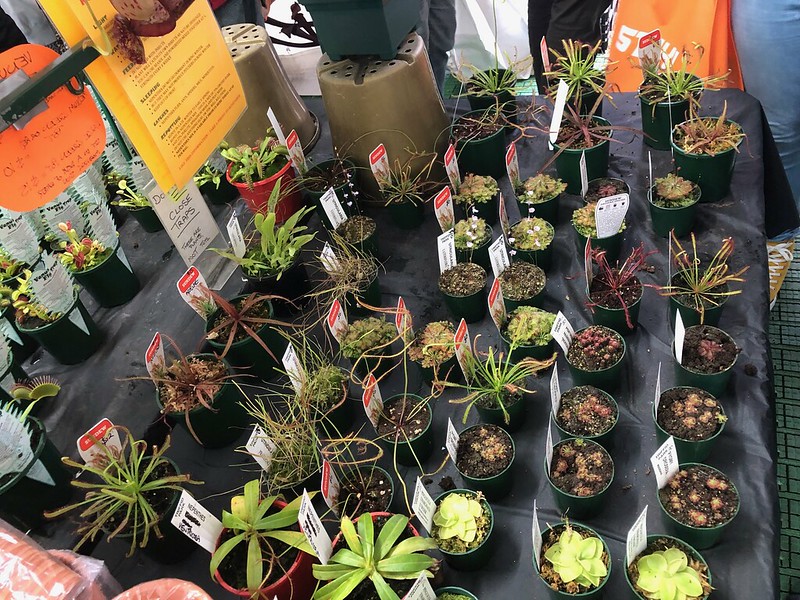Last time I blogged, it was quarter of a year ago and midsummer. The flava were just finishing up, and I was making a Drosera schizandra terrarium.
So then what happened?
It got hot. Seriously hot! And it stayed hot well into March, with April also being hotter than normal, but bearable. In late January, we had 10 days of maximums not below 36°C (most of the week was above 40°C!) with windy conditions, and this set everything back very badly (even though we kept water up to everything). By this time next week, we will have had our first real frosts, with the weekend set to get 1°C minimums, so autumn has been very truncated.
As a result, no-one in Canberra had decent pitchers from their autumn Sarracenia (i.e. Sarracenia leucophylla and S. rubra), with the pitchers arriving in early April. Most of the pitchers we did get were tiny. I managed to get a few half-decent ones (see above), but nothing like previous years. The pitchers above are close-ups, they are not very big at all.
I’m thinking it may be a safer bet to stay with the spring peaking species like S. flava…
On the plus side, I managed to get the trifecta of Drosera Section Prolifera in the collection and growing successfully. The last addition was a D. prolifera via AUSCPS Canberra coordinator Barry (thanks Barry!). Its been going strong for about two months now and is putting up several leaves a week. So far, its still one plant, but I’m hoping it will be in flower by the end of winter and busily proliferating across its bowl. The setup is a slightly smaller glass bowl than the D. adelae, with a glass saucepan lid on top. I diffused the light from a 7W Vaxer lamp using a sheet of plastic foam paper (the type that manufacturers use to protect appliances when you buy them) folded into 4 layers) and a sintered glass plate, with the lamp on top.
The D. adelae is also going very well, with its roots now reaching all around the bowl. There should be a huge number of pups coming up soon (guaranteed if I help by taking to the bowl with a pair of scissors!). The parent plant, which was at death’s door at the end of last winter, is now about 400 mm across! Impressive!
The D. schizandra terrariums have been a lot more hit and miss. The first one I set up (left) was inadvertently put in a spot where it got a hour or so of full sun daily, which set it back. Fortunately, they give you some warning before they die, so I managed to catch it and fix it up in a new spot. However, a second terrarium that was positioned better has done well, with the plant not missing a beat – its been glistening in dew continuously from when it was re-potted.
The Nepenthes ampullaria and N. hookeriana terrarium was also tidied up, with the plants repotted into fresh mix. I also reduced the wattage of the lamp, replacing the 20W downlight with a 12W LED light bulb. The green form N. ampullaria responded by putting up a large pitcher a few days ago, so all good so far.
Here’s how the green clone looked when de-potted. Note how the basal rosettes attach to the rhizome.
On the Sarracenia flava front, its repotting time. I’ve long been wondering why my flava var. rubricorpora have not been very red, and I’ve put it down to recycling peat from the bog 3 seasons ago (which would make it 6 seasons old – no wonder they weren’t happy!). I’m experimenting with a new formula of 2 peat: 1 sand: 1 scoria: 1 chopped pine needles. I’ve only managed one pot so far due to unexpected rain today, but the mix looks and feels very good. I’m hoping the scoria will help aerate the media more than using just peat, and am also hoping the pine needles will help reduce the amount of peat needed. Next time, I’ll put aside the pine needles and compost them for a full year before using it. I’m very interested in the peat-free mixes the UK growers are now using – the issue here is that the only remotely suitable material has lime added to it to increase pH, making it unsuitable for use in CP mixes (except Nepenthes – the mix I refer to is an orchid bark that I’ve used for them before with great results).
I also managed to make it to Melbourne for the flower show a few weeks ago. Collector’s Corner had an impressive display with numerous CPs.
They even had a mound made entirely of S. x courtii (left)! At right is a N. x dyeriana.
Triffid Park also had an impressive display too, with some beautiful Sarracenia. It was great to also have an opportunity to spend some time talking with Donna and Jason.

And I even made it to the Melbourne Zoo, where I added a butterfly to my twitch list – the Red Bodied Swallowtail (Pachliopta polydoras queenslandicus). Its one of the few swallowtails in Australia I had not seen alive (the others being the alpine Graphium macleayanum and O. priamus macalpinei).
To close, here’s a male Cairns Birdwing butterfly (Ornithoptera euphorion), also in the Melbourne Zoo’s butterfly house.









